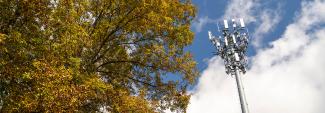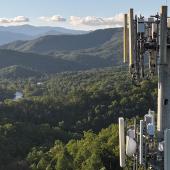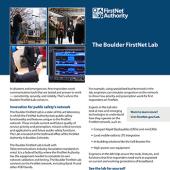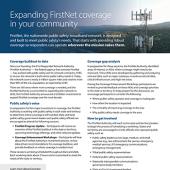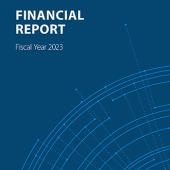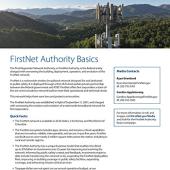Across the nation, public safety agencies are struggling to manage the high number of non-urgent calls to 9-1-1. One out of every three 9-1-1 calls does not require a visit to the Emergency Department (ED), but nearly every medical call still results in one. Often, this level of response is unnecessary based on the patient’s actual needs. It also ties up responder resources, preventing public safety officials from responding to more severe emergencies.
A Preventative Approach to Emergency Healthcare
In Chesapeake, Virginia, the local fire department is exploring ways to better manage response for non-emergent care. The Chesapeake Fire Department’s Mobile Integrated Healthcare (MIH) program, which launched in January 2020, aims to provide residents with effective, efficient, and appropriate access to healthcare. Through home-based visits, the program aims to reduce the number of unnecessary ED transports, free up first responder resources, and improve patient care and response by connecting patients with the resources they actually need.
The program consists of four main initiatives:
- Multi-Visit Patient Program – the department identifies frequent 9-1-1 callers, conducts at-home risk assessments to determine their medical needs, and connects them with the resources needed to manage their healthcare outside of the ED.
- Fall Prevention Program – the department identifies residents at higher risk of falling, assesses the risks of their home environment, and addresses safety hazards within the home.
- Mobile Care Clinic – the department provides medical services to high-risk patients who have chronic diseases but are not insured or do not have a primary care provider.
- Refusal of Care Follow-Up Program – the department checks in with residents who have refused ED transport within 24 hours to ensure their condition is not worsening and they have received the medical assistance needed.
These programs take a preventative approach to EMS care, reducing at-home risks and providing residents access to basic healthcare services before conditions worsen and require an ED transport.
They also create new roles and responsibilities for EMS clinicians that fall outside the traditional emergency response functions. With these changes come new ways to operate and communicate.
Connecting EMS Officials and Residents
When the Chesapeake Fire Department began planning for the MIH program, they looked to FirstNet to provide the connection and coverage needed.
“Upon launching our program, our first priority was to be able to communicate amongst one another and have real-time access to information while visiting with clients in their homes,” said Ingrid "Jo" Phillips, the Department’s MIH Program Manager. “We purchased tablets that would enable us to do this, and having FirstNet access has made care coordination a smooth and seamless process.”
The fire department relies on FirstNet not only for communications among responders, but also outreach with residents.
“After we identify potential clients through our Fire-EMS records, we conduct an interview of the client or their caretaker,” said Tom Watson, who serves as the MIH Paramedic Continuous Quality Improvement Lead and manages the risk-reduction initiatives, such as the Fall Prevention program. “Together, we can identify potential safety issues. Then we can schedule an in-home visit by a member of our team to discuss options and facilitate safety improvements in the home.”
Watson explained that equipping first responders with FirstNet phones transforms them into the single point of contact for patients. Rather than calling 9-1-1 or a general number, patients can reach out to the responder directly.
“The MIH risk reduction team relies on FirstNet to provide a reliable connection that allows them to work inside people’s homes as they identify gaps in services and connect potential clients to community resources,” said Phillips.
As the program continues to gain traction in the community, the fire department will continue to rely on FirstNet to power its response.





